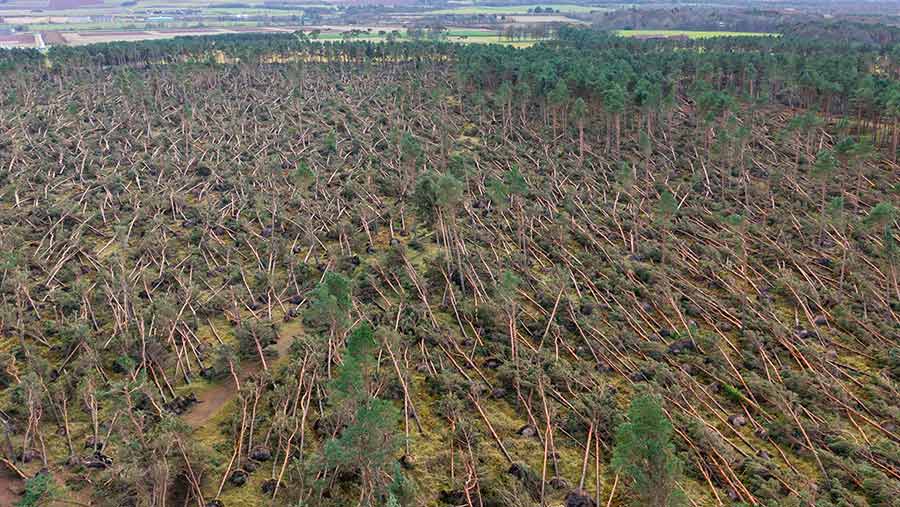Opinion: Right tree in the right place – but what about the weather?
 Storm Arwn. © Iain Masterton/Alamy Stock Photo
Storm Arwn. © Iain Masterton/Alamy Stock Photo It seems blindingly obvious that if we are planting trees, they have to be the right trees in the right place. But with our weather becoming increasingly volatile, do we still know what “right” means?
Had I spent all summer at the farm in Cumbria and avoided all news reports, I might have thought there was nothing particularly exceptional about this year’s weather.
There were some warm, dry spells and it was 32C on one memorable day, but otherwise the temperature was comfortable and there was a fair amount of rain.
See also: How to make money from new woodland
However, on my journeys home to Suffolk, it was disturbing to see the countryside become increasingly parched the further south and east I travelled.
As the months went by without rain, any grassed areas in East Anglia baked to dust with a bit of desiccated vegetation on top.
Many trees turned brown – not in a mellow, autumnal way, but scorched and shrivelled, dropping their leaves and seeds far too early.
Media stories offered little comfort. While some surprisingly exotic crops had done well in the UK this year, parts of the country might, before long, be too hot and dry for our native trees, beech in particular being vulnerable to drought stress.
Pests and diseases are predicted to take advantage of warmer temperatures to spread northwards, too.
Then I discovered from press articles that there is such a thing as “tree migration”.
In the eastern United States, studies show that populations of trees are shifting at the rate of 10-15km a decade. Conifers are heading north, oaks and birches westwards.
And in Scandinavia, the warming climate means birch, pines, spruce and willow are growing at higher elevations than ever before.
Fate of planting schemes
All this made me wonder about the fate of current planting schemes. How many years does it take for a young tree to be resilient enough to survive a summer, or a series of summers, like the one we’ve just had?
We are warned not to expect benign winters either – instead, storms will be more frequent, with damaging winds and flooding caused by too much rain arriving in one go.
We saw this year just how many established trees can be flattened when gales cut a swath across the country.
All tree planting is an act of faith, but can anyone planting saplings now feel the same degree of certainty enjoyed by the great landscape gardeners of bygone eras, whose illustrations confidently envisaged their employers’ parks full of mature specimens?
At the farm in the Lake District, immense care is being taken under the Countryside Stewardship scheme to put the right tree in the right place.
But after that, we can only hope that the Cumbrian weather will be kind enough far enough into the future for the longer-lived species, such as oaks, to achieve their natural lifespan.
It’s a sobering thought that in some parts of the UK it may already be too late to plant the species which have grown there historically because we can no longer rely on nature to provide appropriate amounts of warmth and moisture.
And what a dreadful irony if trees planted now, to mitigate climate change, are killed off by the weather before they can have any beneficial effect.

